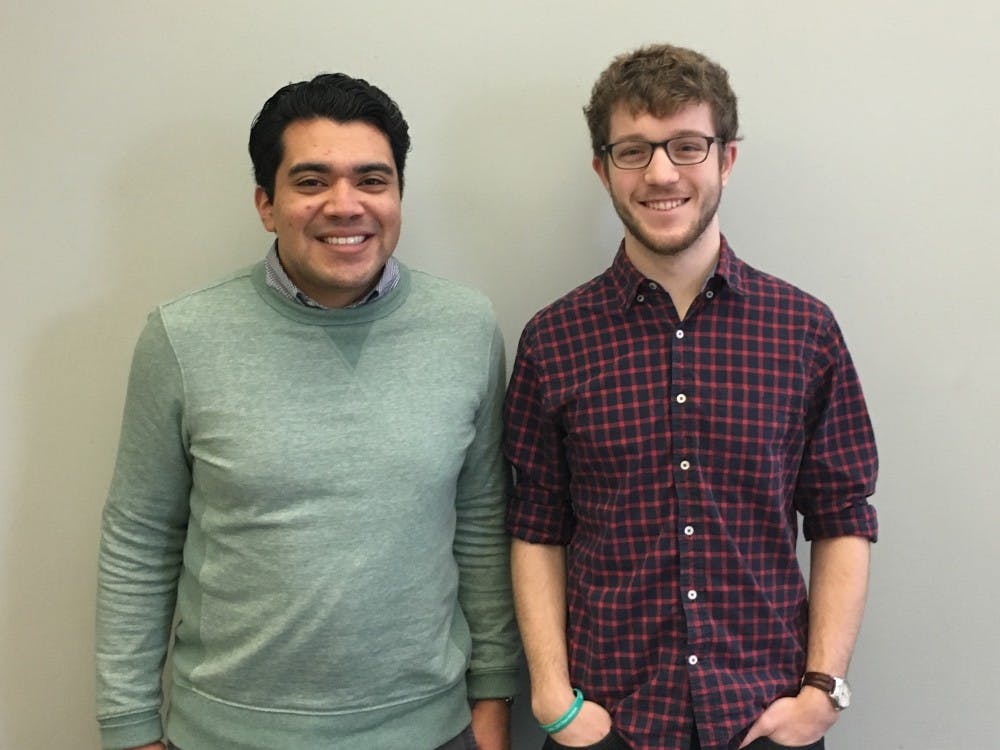By Enid Spitz, Staff Writer -- spitz13@up.edu
Where can you find Henry Adams, Homo erectus and the SUV all in one place? In the collected literary works of UP authors, these subjects, and many more, spark conversation.
Students on The Bluff may have the advantage of a small student-to-faculty ratio, but how well do you really know your professors?
Maybe professor Matthew Warshawsky of the International Languages and Cultures Department didn't tell you about his work on "a crypto-Jew in colonial Mexico," or you might have missed professor of engineering Aziz Inan's math puzzlers in the Franklin Gazette.
UP is home to a large group of published authors, some of whom might be teaching your classes.
Last year, 55 UP authors and their writings filled the Library one day with everything from "A female Homo Erectus pelvis from Gona, Ethiopia," by professor Robert Butler to physics professor Shannon Mayer's analysis of the SUV.
Today at 3 p.m., the UP Authors' Reception returns for a second year, offering the community a closer look into the scholarly accomplishments of the university's faculty. You can think of it as a chance to meet the intellectual rock stars of UP, who often fly under the radar.
"The event gives students and faculty a chance to see more facets of the people they work with," Drew Harrington, dean of the Library and event creator, said.
This year's event will feature 70 authors. Their scholarly articles, nonfiction books and even some works of fiction will be on display on the main floor of the Wilson W. Clark Memorial Library. The Library tries to include all works published in 2009, referring to the annual UP report of professors' printed works and inviting all staff via the upbeat newsletter so no one is left out.
Professor Genevieve Brassard of the English Department enjoyed taking part in the event last year.
"It's a wonderful initiative from Library staff to remind the UP community of the scholarly part of the teacher's life," she said.
In addition to their role in the classroom, professors are required to stay active as intellectuals in their selected field. According to Lars Larson, professor of English, his department requires teachers to publish three scholarly articles to merit tenure.
"We follow the philosophy that the truly active teacher delves into the well of scholarship," Larson said. "I hunger to do more writing."
The University considers it important that professors, like Larson, have a certain dedication to their subject.
"You have to demonstrate that you're engaged in your profession," Brassard said.
Being engaged involves research, writing and being published. For Tisha Morrell, professor of education, it meant writing the textbook that is required in Educational Research classes.
Much of this work goes unnoticed by students.
"I'm sure none of my undergraduate students know I wrote a book," Morrell said.
Though much of professors' work is directed at professionals in their specialized fields, Larson explained what they publish is important to students as part of the academic community.
"What we write still matters because we're pushing the boundaries," he said.
Harrington sought to remedy the disconnect between authors and their students when she began the Authors' Reception last year.
"I wanted us to be connected in more ways," she said. "The most important connection is between students and faculty."
Even if you can't make it to the event, the Library website features a UP Authors' bibliography with direct links to almost all the featured articles. Students can read what their professors and other UP authors have contributed in areas from mathematics to theology to education. The UP bibliography is a diverse list with something for every interest.
The Library encourages all students and staff to visit the event if they are able to. Students can read and learn, meet the authors and enjoy free snacks and refreshments.
"This is our way of bringing people together in a scholarly way and a human way," Harrington said.







